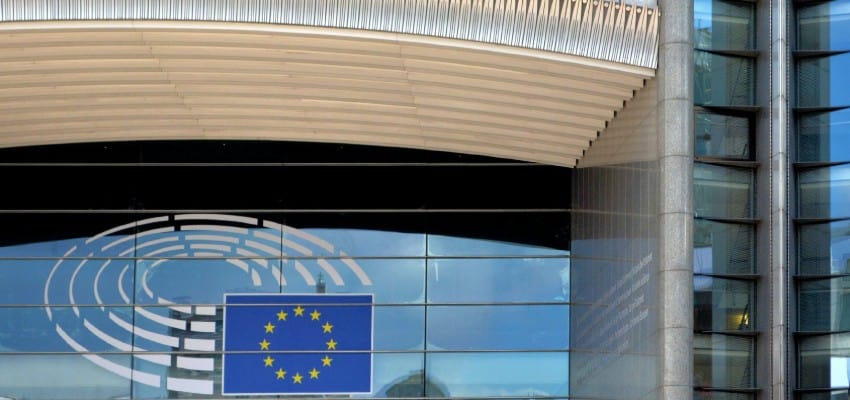|
|
Content Assessment: Achieving Interoperability? EU Risk Management Frameworks
Information - 90%
Insight - 92%
Relevance - 89%
Objectivity - 91%
Authority - 93%
91%
Excellent
A short percentage-based assessment of the qualitative benefit of the newly published report from ENISA on EU risk management frameworks.
Editor’s Note: From time to time, ComplexDiscovery highlights publicly available or privately purchasable announcements, content updates, and research from cyber, data, and legal discovery providers, research organizations, and ComplexDiscovery community members. While ComplexDiscovery regularly highlights this information, it does not assume any responsibility for content assertions.
To submit recommendations for consideration and inclusion in ComplexDiscovery’s cyber, data, and legal discovery-centric service, product, or research announcements, contact us today.
Media Announcement from ENISA*
How to Achieve the Interoperability of EU Risk Management Frameworks
- Published by the European Union Agency for Cybersecurity (ENISA)
- Authors include Costas Lambrinoudakis, Stefanos Gritzalis, Christos Xenakis, Sokratis Katsikas, Maria Karyda, Aggeliki Tsochou, Kostas Papadatos, Konstantinos Rantos, Yiannis Pavlosoglou, Stelios Gasparinatos, Anastasios Pantazis, and Alexandros Zacharis
News Release
The European Union Agency for Cybersecurity (ENISA) issues an analysis of the interoperability potential of cybersecurity risk management frameworks and methodologies to improve decision-making.
The report (Interoperable EU Risk Management Framework) published today (January 13, 2022) is primarily designed to assess the existing risk management frameworks and methodologies in order to identify those with the most prominent interoperable features.
What is security risk management?
Information security risk management consists of the coordinated activities of an organization in order to control information security risks. These activities are inscribed in a process allowing to:
- establish the external and internal context;
- assess the risks and decide whether to address the risks;
- draw a plan to implement decisions made on how to manage the risks.
In order to reduce the risks to an acceptable level, the process includes an analysis of the likelihood of potential security breaches prior to making the decision on solutions to implement.
About the report
A systematic survey of risk management approaches was performed in different contexts such as industry, business, government, academia, etc. The process included a variety of inclusion criteria ranging from best practices, methodologies proposed as standards and guidelines by international and national standardization bodies, etc.
Key European stakeholders interviewed could share their views which were considered in the process and shaped the analysis of the outcomes. This resulted in:
- A new ENISA inventory of risk management frameworks and methodologies;
- A study on the way to evaluate and categorize European Risk Management Frameworks based on their interoperability potential including a baseline of an EU-wide interoperability framework.
Key outcomes of the report
The analysis and research performed resulted in the compilation of the following information:
- the identification of fully developed national and sectorial risk management frameworks and methodologies and their components;
- the identification of specific features such as national or international scope, target sectors, size of target audience, maturity, compliance with relevant standards, compatibility with EU regulation and legislation, etc.
- the development of a methodology for the assessment of the interoperability potential of the identified frameworks based on a set of factors such as risk identification, risk assessment and risk treatment;
- the application of the methodology to identify frameworks with a higher interoperability potential.
The elements gathered in the study serve the purpose of providing keys to potentially form a more coherent EU-wide risk management framework.
Besides, the report includes a proposal for a new ENISA inventory of risk management frameworks and methodologies: the Compendium of Risk Management Frameworks with Potential Interoperability.
Background
Risk management is the process of identifying, quantifying, and managing the risks an organization faces. The process aims to reach an efficient balance between the opportunities available to enhance prevention of cyber risks and reducing the vulnerabilities and losses. As an integral part of management practices and an essential element of good governance, risk management needs to be seeking to support organizational improvement, performance and decision-making.
ENISA contributes to risk management by collecting, analyzing and classifying information in the area of emerging and current risks and the evolving cyber threat environment.
The aim of this work was not to build yet another risk management framework from scratch. It rather serves the purpose to exploit parts of existing schemes, based on the inventory work done in the introductory step of this project.
As next steps ENISA is planning to:
- Define interoperable terms between EU risk management frameworks & regulatory frameworks;
- Develop common/comparative risk;
- Create a Methodology & Protocol that helps Member States with the uptake of interoperability of proposed risk management framework.
Read the Complete Report: Interoperable EU Risk Management Framework (PDF) – Mouseover to Scroll
ENISA Report - Interoperable EU Risk Management FrameworkENISA Report - Compendium of Risk Management Frameworks with Potential Interoperability
*Shared with permission under Creative Commons – Attribution 4.0 International (CC BY 4.0) – license.
Additional Reading
- Assessment and Advice: ENISA Update on Log4j Vulnerability
- Defining Cyber Discovery: A Definition and Framework
Source: ComplexDiscovery



























